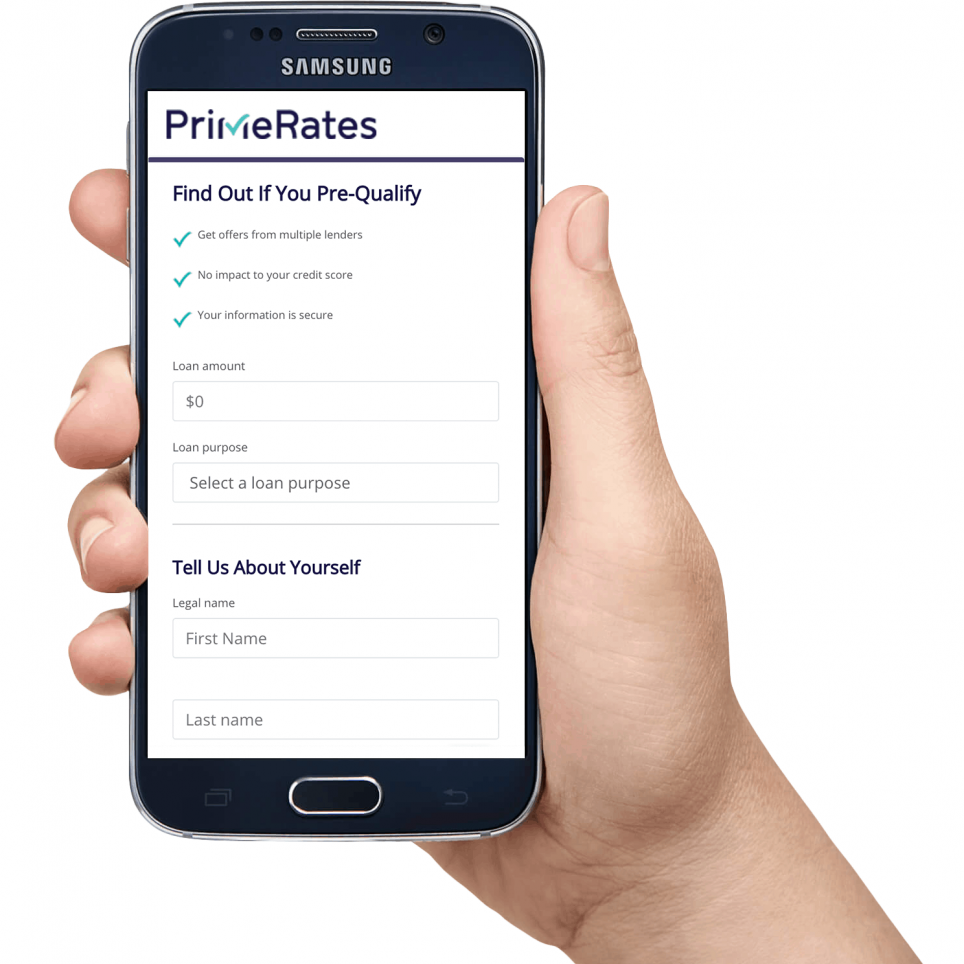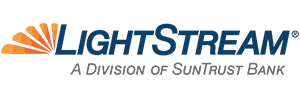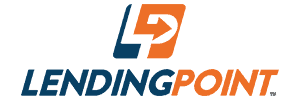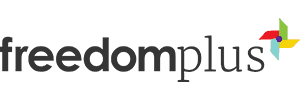Get your rate in minutes
No credit score impact
Borrow up to $100,000
How PrimeRates Works
PrimeRates provides access to personalized loan offers through our simple and quick pre-qualification application. Once you're pre-qualified, you can select the best offer for you and finalize the loan application with the lender.
Apply in minutes
Simple pre-qual application in less than 1 minute.
Select your loan offer
Choose the offer that best fits your needs.
Receive funds quickly
Finalize your loan offer, get approved, and receive funds.

Best Way To Finance Home Improvements
It’s no secret that home repair and improvement projects can be costly. These days, homeowners looking for ways to pay for home improvement have a myriad of choices such as a home equity loan, home equity line of credit (HELOC), mortgage refinance, credit card, or a personal loan. With all these options to choose from, how can you determine the best way to finance home improvements? Much like other big purchases, homeowners looking for home improvement financing or home repair financing should carefully evaluate the various types of financing available in the market.
What is home improvement financing?
Home improvement financing is an umbrella term that refers to the loans that homeowners apply for to pay for home repair or renovations. For example, you can acquire a personal loan for home repair financing or a home equity loan for major home improvement projects. These home repair loans or home improvement loans can be used to pay for labor, supplies, and other expenses related to your project. Homeowners considering different home repair loan options can check loan products offered by banks, credit unions, and even online lenders.
What is a home repair loan?
Like the term home improvement financing, a home repair loan is a general term used to describe the different loan products offered by lenders. As mentioned above, a home repair loan can come in the form of a mortgage refinance, a home equity loan, a home equity line of credit (HELOC), a credit card, or even a personal loan for home improvement.
If you’re wondering which loan is best for your current needs, let’s talk about some of the loans that you may want to consider.
What type of loan is best for home repairs?
What are my options for home repair loans? Let’s get one thing out of the way: there is no single best way to finance home repairs or improvements. The type of loan you choose largely depends on your financial situation and the scale of your home improvement project.
For major projects:
- Home equity loans
-
- A home equity loan is a second mortgage offered by banks, credit unions, and other lenders that uses your home as collateral. This type of loan allows homeowners to borrow loans based on the difference between their home’s current market value and mortgage balance. The longer you’ve been paying your mortgage down, the better the equity in your home will be. What’s great about home equity loans is that you have a set repayment term with fixed payments covering both the loan and the interest.
- Home equity lines of credit
-
- One of the most popular home repair financing options, a home equity line of credit (HELOC) is a revolving source of funds that you can access as needed. Much like credit cards, HELOCs only charge interest on funds used. What makes HELOCs unique is that you can access your credit line as needed as long as you only borrow within your limit and pay on time.
- Cash-out refinance
-
- If you’re looking to make some major home improvements, why not try cash-out refinancing? Instead of taking out a second mortgage, a cash-out refinance allows homeowners to refinance a mortgage for more than your previous mortgage balance and take the difference in cash. The only downside is that your interest rate and your repayment terms will change when you do a cash-out refinance for home improvement financing.
For minor projects:
- Personal loans
- The truth is personal loans can pay for major or minor home improvement projects depending on how credit-worthy you are. Some banks offer personal loans of up to $100,000 to applicants that are in great financial shape. The reason why we included personal loans in this section is that the payback period on this type of loan is typically much shorter compared to other types of loans. Naturally, the bigger the loan, the more difficult it is to repay.
- However, the great thing about personal loans is that it’s easier to qualify for and would not use your home as collateral. This means that even if you become unable to pay your loan back, you will not be at risk of losing your home. This works especially well if you’re looking for home repair financing with bad credit. Another thing to keep in mind is that payment terms for personal loans usually have a fixed interest rate throughout the duration of your loan which makes your monthly costs more predictable.
- Credit cards
- Credit cards provide borrowers with a credit line that they can borrow money from, payback, and then borrow again. The biggest advantage that credit cards have over other types of home repair loan options or home improvement loan options is that every purchase helps the borrower earn enough rewards, points, or cash back to redeem later on. Talk about getting the most out of your money, right? However, note that credit cards don’t have the most flexible payment terms and have strict payment schedules.
What are the pros and cons of home improvement financing?
Now that you have an idea about the different loans that you can apply for to finance home improvements, let’s now take a look at some of the pros and cons of each loan option.
Pros and cons of home equity loans
Pros
- Competitive interest rates
- Predictable monthly payments
- Money borrowed can be used for any purpose
- Interest payments may be tax-deductible
Cons
- Your loan is secured by your home
- You now have two mortgage payments
- Might not be the easiest loan to qualify for
- You have to pay closing costs
Pros and cons of home equity lines of credit
Pros
- You will only pay interest on the amount you borrow, not on the total available credit
- Borrowers can qualify for a low APR depending on credit history
- Interest payments may be tax-deductible
- You can borrow only what you need instead of a lump sum
Cons
- Risk of foreclosure
- HELOC loans have a variable interest rate which means your rate can fluctuate
Pros and cons of cash-out refinance
Pros
- Competitive interest rates
- Long repayment period
- Tax breaks are available if the money is used to buy, build or substantially improve your home
Cons
- Risk of foreclosure
- New loan terms and costs
- Expect to pay closing costs
Pros and cons of personal loans for home improvement financing
Pros
- No collateral required
- You can specify the amount you would like to borrow
- Quick application and approval process
- Could be a great option for home repair financing with bad credit
Cons
- You won’t have to use your home as collateral
- Higher interest rates compared to other loans
- May come with origination fees
- Some personal loans have prepayment penalties
Pros and cons of credit cards for home improvement financing
Pros
- No collateral required
- Lower credit score requirements
- Borrowers could qualify for rewards and other promos
- Some promotional rates could mean no interest payments (provided that you pay your debt on time)
Cons
- Short and strict pay-off period
- No tax breaks
- It’s easy to fall into a debt trap
What is the difference between a home equity loan and a home improvement loan?
The main difference between a home equity loan and a home improvement loan is that homeowners with enough equity can get a better rate, more money, and a longer payoff period with a home equity loan. A home improvement loan is usually used as a blanket term that refers to unsecured personal loans for home improvement. Another important factor to consider is that unsecured home improvement loans do not use your home as collateral as opposed to home equity loans.
What does your credit score have to be to get a home improvement loan?
As a borrower, you should expect the lender to review your credit score as part of the overall review process. Creditworthiness is the biggest factor in qualifying for any type of loan. A credit score in the good range might be enough to get approved for a home improvement loan but it still depends on the minimum credit score requirements set by your prospective home improvement lender. Applicants who qualify for the best rates usually have credit scores that are in the very good or exceptional range.
Should I get a personal loan for home improvements or home repairs?
It depends. Whether or not a personal loan is right for your home improvement project, it really comes down to two things: your current financial situation and the scale of your project. Depending on your needs and the interest rate you are able to secure, it’s always important to study the different benefits and potential downsides of a personal loan.
Key Takeaway: Always shop around!
Whether you’re building a new deck, remodeling your bathroom, or repairing a few worn-down sections of your house, it’s important to study all of your options when determining how to finance a home improvement project. If you need an all-in-one place to analyze personalized offers from multiple lenders, use PrimeRates.
PrimeRates is an online resource tool that helps consumers learn more about various types of loans ranging from personal loans to business loans. PrimeRates enables borrowers to access loan offers through a simple and quick pre-qualification process. Once you’re pre-qualified, you can select the best offer for you and finalize the loan application with your prospective lender.
Like in most significant financial decisions, the best answer to the question “how to finance a home improvement project?” is to shop around! Don’t feel overwhelmed by the variety of options to choose from as not all loans are created equal. Make sure you're doing your due diligence and researching the right opportunities that make the most sense to you financially.
PrimeRates Lender Partner Network

LightStream

Prosper

Upgrade

BestEgg

SoFi

Payoff

LendingPoint

FreedomPlus

OneMain

Avant